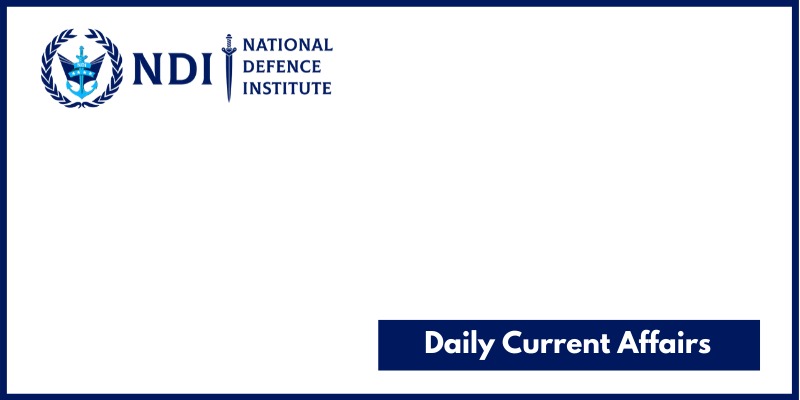About:
- The share of the informal economy may have shrunk to no more than 20% of the economic output from about 52% in 2017-18.
- There are wide variations in the formalisation levels in different sectors but the SBI estimated that the informal economy is possibly at a maximum of 15% to 20% of formal GDP in 2020-21.
- The SBI projections suggest that the informal agriculture sector has shrunk from 97.1% of the sector’s GVA in 2017-18 to just 70%-75% in 2020-21, driven by the increased penetration of credit through Kisan credit cards. Real estate has also seen a significant dip in informal activity from 52.8% in 2017-18 to 20%-25% last year.
- The report estimated that about ₹1.2 lakh crore of cash usage has been formalised since the COVID-19 pandemic.
- Formal agriculture credit flows have grown ₹4.6 lakh crore between 2017-18 and 2020-21, with digital payments for petrol and diesel rising around ₹1 lakh crore in the same period.
Informal sector
- The informal sector consists of “own-account” or unorganised enterprises employing hired workers, with the highest share of such unorganised activity being in agriculture where holdings are small and fragmented.
- As per a National Sample Survey (NSS) of 2014, around 93% of the workforce earned their livelihoods as informal workers.
- An IMF policy paper earlier this year estimated that the share of India’s informal economy in the Gross Value Added (GVA) was at 53.9% in 2011-12 and improved only marginally to 52.4% in 2017-18.
2. INDUS RIVER DOLPHIN
About:
- However, Punjab’s wildlife preservation wing has gone a step ahead to not only protect the dolphins but also their natural habitat.
- The Indus river dolphin is classified as endangered by the International Union for the Conservation of Nature (IUCN) and, until recently, it was believed that these dolphins were endemic to Pakistan.
- But in 2007, a remnant but viable population of Indus dolphins was discovered in Punjab’s Harike wildlife sanctuary and in the lower Beas river.
- Since its discovery, research is being done by Punjab’s Department of Forests and Wildlife Preservation in partnership with WWF-India on the current distribution, habitat use and population abundance of the mammal.
- The Indus river dolphin was declared the State aquatic animal of Punjab in 2019.
- Extension programmes will be held in Punjab to develop a group of dedicated individuals, called ‘Beas-Dolphin Mitras’ [friends and protectors] of the river Beas.
3. TOBACCO USAGE
About:
- Now, the National Commission for Protection of Child Rights (NCPCR) has appealed to the Central Government to strengthen the tobacco control law to prevent the youth from taking up tobacco use.
- Experts have urged the Government to put curbs on the sale of tobacco products to those below 21, to impose a comprehensive ban on tobacco advertising and to ban sale of single sticks of cigarettes/bidis.
- Increasing the minimum legal age for sale of tobacco products from 18 to 21 and banning the sale of loose/single stick of cigarettes by amending COTPA 2003 (Cigarettes and Other Tobacco Products Act) are crucial to protect youth from tobacco as it has the potential to reduce tobacco use initiation and progression to regular smoking.
- Nearly 27% of all cancers in India are linked to tobacco usage.
4. 2021 G20 ROME SUMMIT
About:
- No time-bound agreements were reached as leaders of the world’s top economies ended the summit in Rome, recommitting to providing $100 billion a year to counter climate change, and pushing for greater vaccine equality to fight the COVID-19 pandemic.
- G-20 countries also committed to ending international financing for all new coal plants by the end of 2021, but made no mention of domestic commitments on ending coal power generation.
- The final communique, agreed upon after negotiations overnight, spoke only of the “key relevance of achieving global net zero” on carbon emissions “by or around mid-century”.
- Amongst the other highlights of the statement was a decision to pursue the recognition of more vaccines by the World Health Organization under a “One Health approach” for the world, and providing finances and technology for vaccine production at “mRNA Hubs” in South Africa, Brazil and Argentina, and to mobilise more international public private financing for “green” projects.
- UN Secretary General Antonio Guterres said the failure of the G-20 summit to set a specific date for countries to achieve “Net Zero” carbon emissions had left his hopes “unfulfilled” but “not buried”, as the joint communique set the stage for tough negotiations at the COP26 Climate Change summit in Glasgow that begins on Monday.
- The 2021 G20 Rome summit was the sixteenth meeting of Group of Twenty (G20), that took place in Rome, the capital city of Italy, on 30–31 October 2021.
5. CLIMATE EQUITY MONITOR
About:
- The Climate Equity Monitor is aimed at monitoring the performance of Annex-I Parties under the UNFCCC (developed countries) based on the “foundational principles” of the Climate Convention. The performance and policies of the Non Annex-I Parties (developing countries) will be provided for comparison.
- The website was conceptualised and developed by the Climate Change Group at the M.S. Swaminathan Research Foundation, Chennai, and the Natural Sciences and Engineering Department at the National Institute of Advanced Studies, Bengaluru, with other independent researchers.
- The database aims to highlight the disparity between the emissions of developed and developing countries with countries such as the United States, Canada and Australia and those in Western Europe shown as having a net carbon debt while developing countries such as India and China having net credit.
6. WORLD PEDESTRIAN DAY
Why is Guru Nanak Dev considered the world’s most notable and revered pedestrian?
- To spread the message of oneness and to break barriers across faiths by engaging in spiritual dialogues, the founder of Sikhism, Guru Nanak Dev, travelled far and wide during the 15th and 16th centuries.
- From Mecca to Haridwar, from Sylhet to Mount Kailash, Guru Nanak visited hundreds of interfaith sites related to Hinduism, Islam, Buddhism, and Jainism throughout his journeys (also called udaasis).
- At some sites, gurdwaras were constructed to commemorate his visit.
- Later his travels were documented in texts called ‘janamsakhis’. These sites are now spread across nine nations as per current geographical divisions — India, Pakistan, Iran, Iraq, China (Tibet), Bangladesh, Saudi Arabia, Sri Lanka, and Afghanistan — and some are even inaccessible due to travel restrictions or being located in conflict zones.
- It is believed that during those times, when early modes of transport were limited and were mostly restricted to boats, animals (horses, mules, camels, bullock carts), Guru Nanak Dev, along with his companion Bhai Mardana, undertook most part of his journeys on foot.
7. FIT INDIA PLOG RUN
About:
- Plogging is a unique activity that combines fitness and cleanliness - Swaachta and Swasth - in which participants collect litter while jogging.
- The day also marked the end of the 'Clean India' campaign for this year, which started on October 1.
- Ripudaman, who is known as the Plogman of India, guided the 500-member group with warm-up exercises at the start of the day's proceedings and administered the Plastic Free Pledge to participants at the end.
8. SARDAR PATEL LEADERSHIP CENTRE
About:
- The Centre aims to lay the foundation capacity building for future generations of Civil Servants so that they learn from the best practices of leadership across the world while at the same time they remain connected with their cultural ethos, values and roots.
- The Sardar Patel Leadership Centre will emerge as a Huge Resource Centre to provide continuous study and learning opportunities to Civil Servants from India and Abroad as visualised by the Father of All India Services.
- He added that every officer must determine their own path of self-guided learning in the spirit of Mission Karmayogi.
9. Y 12704 (VISAKHAPATNAM)
About:
- The contract for four ships of Project 15B, as the Visakhapatnam class ships are known, was signed on 28 January 2011. This project is a follow-on of the Kolkata class (Project 15A) destroyers commissioned in the last decade.
- Designed by Directorate of Naval Design, Indian Navy’s in-house design organisation; and built by M/s Mazagon Dock Shipbuilders Ltd, Mumbai; the four ships are christened after major cities from all four corners of the country viz. Visakhapatnam, Mormugao, Imphal and Surat.
- The keel of Visakhapatnam was laid in October 2013 and the ship was launched in April 2015.
- The 163 metres long warship has a full load displacement of 7400 tonnes and maximum speed of 30 knots. The overall indigenous content of the project is approx. 75%.
The destroyer is installed with major indigenous weapons which include:
- Medium Range Surface-to-Air Missiles (BEL, Bangalore).
- BrahMos Surface-to-Surface Missiles (BrahMos Aerospace, New Delhi).
- Indigenous Torpedo Tube Launchers (Larsen & Toubro, Mumbai).
- Anti-Submarine Indigenous Rocket Launchers (Larsen & Toubro, Mumbai).
- 76mm Super Rapid Gun Mount (BHEL, Haridwar).
10. DAIRY SAHAKAR SCHEME
About:
- The Dairy Sahakar with a total investment of Rs 5000 crore will be implemented by NCDC under Ministry of Cooperation, Government of India to realize the vision, “from cooperation to prosperity".
- Under it, financial support will be extended by NCDC to eligible cooperatives for activities such as bovine development, milk procurement, processing, quality assurance, value addition, branding, packaging, marketing, transportation and storage of milk and milk products, exports of dairy products within the overall objectives of "Doubling the farmers income".
- There will also be a convergence with various schemes of Government of India and / or of State Government/UT Administration/ Development agencies/ bilateral/multilateral assistance/ CSR mechanism is encouraged.
- The Department of Animal Husbandry and Dairying under Ministry of Fisheries, Animal Husbandry and Dairying, Government of India is also implementing various schemes for development of the Animal Husbandry and dairy sector.
- This Dairy Sahakar will supplement the existing efforts for strengthening the dairy sector in the country.





























































































































































.png)
.png)
.png)
.png)
.png)


.png)
.png)
.png)





.png)
.png)






.png)
.png)
.png)
.png)
.png)
.png)
.png)
.png)
.png)

.png)







.png)
.png)


.png)
.png)
.png)


.png)

.png)
.png)





.jpg)

.png)
.png)


.png)

.png)
.png)
.png)

.jpg)

.jpg)


.png)

.png)
.png)
.png)
.png)
.png)
.png)
.png)
.png)
.png)
.png)




.png)

.png)





.png)
.png)
.png)
.png)
.png)
.png)
.png)
.png)
.png)
.png)
.jpg)
.jpg)

.png)
.png)
.png)
.png)
.png)
.png)
.png)
.png)
.png)
.png)
.png)
.png)
.png)
.png)
.png)
.png)
.png)
.png)
.png)
.png)
.png)
.png)



.png)
.png)

.jpg)
.jpg)


.jpg)
.jpg)
.jpg)
.jpg)
.jpg)

.jpg)








.jpg)
.jpg)
.jpg)
.jpg)
.jpg)

















.jpg)
.jpg)







.jpg)


















.jpg)
.jpg)






























































































.jpg)
.jpg)


























.jpg)

.jpg)










.jpg)








.jpg)




.jpg)










.jpg)


















.jpg)












































.jpg)














.jpg)
.jpg)
.jpg)





.jpg)

.jpg)
.jpg)


































































.jpg)


































.jpg)
.jpg)
















































.jpg)












.jpg)


.jpg)




.jpg)
.jpg)
.jpg)

.jpg)
.jpg)
.jpg)
.jpg)

.jpg)
.jpg)
.jpg)

.jpg)
.jpg)
.jpg)
.jpg)
.jpg)
.jpg)
.jpg)
.jpg)

.jpg)


.jpg)
.jpg)
.jpg)
.jpg)
.jpg)
.jpg)
.jpg)
.jpg)
.jpg)
.jpg)











.jpg)
.jpg)





.jpg)
.jpg)
.jpg)
























.jpg)
























.jpg)









.jpg)
.jpg)







.jpg)
.jpg)









































.jpg)
.jpg)
.jpg)
.jpg)
.jpg)

.jpg)
.jpg)
.jpg)
.jpg)
.jpg)


.jpg)
.jpg)
.jpg)
.jpg)
.jpg)

.jpg)
.jpg)
.jpg)
.jpg)
.jpg)
.jpg)
.jpg)
.jpg)
.jpg)
.jpg)
.png)

.png)
.png)

.png)
.png)
.png)
.png)


.jpg)
.jpg)

.jpg)
.jpg)
.jpg)

.png)
.png)
.png)
.png)
.png)
.png)
.png)

.png)
.png)
.png)
.png)
.png)
.png)
.png)
.png)
.png)
.png)





































































-min.png)



.png)




.png)








































